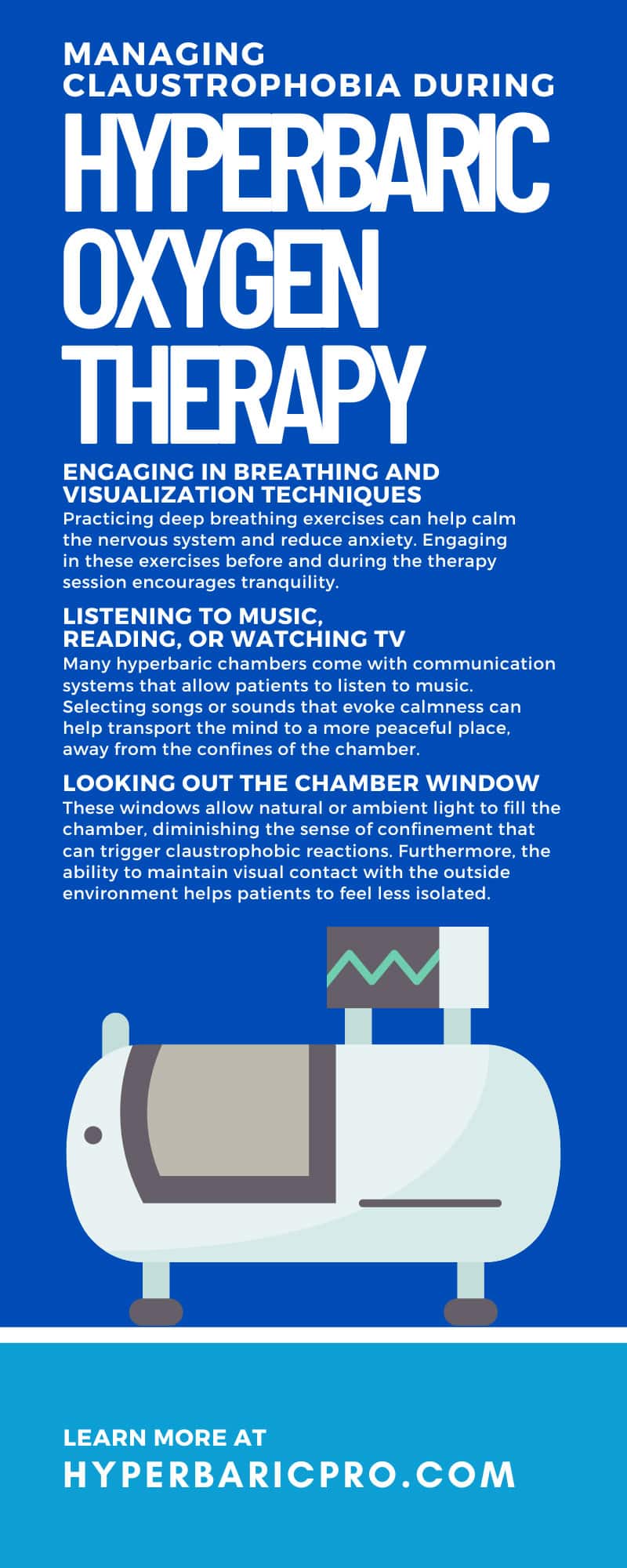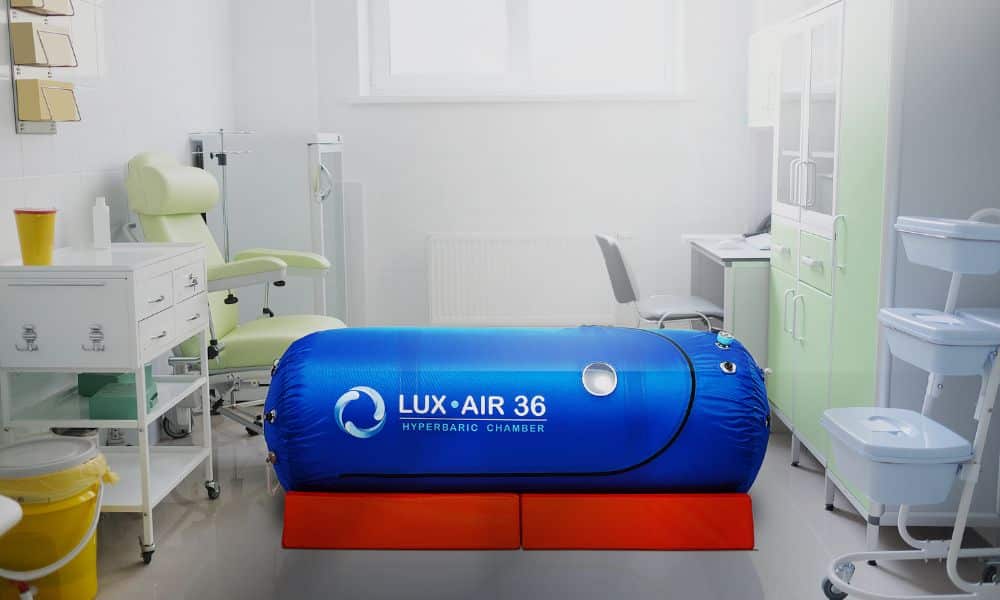Health
Managing Claustrophobia During Hyperbaric Oxygen Therapy
Claustrophobia is a fear of confined spaces that can lead to anxiety and panic. For someone undergoing hyperbaric oxygen therapy, this reaction can be a significant obstacle. The enclosed environment of the hyperbaric chamber has the potential to trigger these fears, potentially influencing the patient’s willingness to continue with the therapy. Discover practical strategies for managing claustrophobia during hyperbaric oxygen therapy and learn more about how chamber designs can enhance comfort.
Understanding Hyperbaric Oxygen Therapy (HBOT)
Hyperbaric oxygen therapy involves lying in a specially designed chamber where the air pressure increases to a predetermined level measured in atmospheres absolute (ATA). The increased pressure allows the user’s lungs to gather more oxygen.
The benefits of hyperbaric therapy include faster wound healing and improved infection control. HBOT is useful for a host of conditions and diseases, including concussions, traumatic brain injury, blood diseases, lung conditions, and Parkinson’s regression.
Despite its benefits, the therapy can seem daunting for people with claustrophobia. Being aware of the advantages can sometimes motivate patients to seek ways to overcome the discomfort of enclosed spaces. However, knowing what to expect can greatly reduce anxiety and pave the way for a better experience.
The Connection Between Claustrophobia and HBOT
When an individual with claustrophobia enters a hyperbaric chamber, their fear can trigger a claustrophobic response. The chamber’s enclosed design means little room for movement, which can become overwhelming and stressful.
Symptoms of claustrophobia may include the following:
- Excessive sweating
- Rapid heartbeat
- Difficulty breathing
- A feeling of choking
- Chest pain or tightness
- An intense urge to escape the situation
The impact of claustrophobia on a person’s ability to undergo hyperbaric therapy can vary. For some, it may merely be a mild discomfort; for others, it may present a significant barrier.
Engaging in Breathing and Visualization Techniques
Practicing deep breathing exercises can help calm the nervous system and reduce anxiety. Engaging in these exercises before and during the therapy session encourages tranquility.
Visualization and mindfulness are other powerful strategies to manage claustrophobia. Imagining a peaceful and safe place can help divert attention away from the confining space. Mindfulness exercises—such as focusing on individual sensations like the texture of the bed or the sound of the chamber’s air—can also enhance comfort.
Listening to Music, Reading, or Watching TV
Listening to calming music or soothing sounds is another effective method for distraction. Many hyperbaric chambers come with communication systems that allow patients to listen to music. Selecting songs or sounds that evoke calmness can help transport the mind to a more peaceful place, away from the confines of the chamber.
Reading offers an excellent escape for many individuals, and this can be particularly beneficial during hyperbaric oxygen therapy sessions. Bringing along a favorite book or magazine can help divert attention from the confined space.
Some hyperbaric chambers come with televisions, providing patients the opportunity to watch movies or series during their sessions. This feature can significantly ease claustrophobic feelings by offering a visual distraction that shifts focus away from the chamber’s confines. Plus, watching familiar or enjoyable content can be soothing, making the therapy experience more comfortable and less stressful.
Looking Out the Chamber Window
Some hyperbaric chambers are designed with larger windows that play a crucial role in alleviating feelings of claustrophobia. These windows allow natural or ambient light to fill the chamber, diminishing the sense of confinement that can trigger claustrophobic reactions. Furthermore, the ability to maintain visual contact with the outside environment helps patients to feel less isolated.
For individuals who experience severe claustrophobia, choosing a chamber equipped with large windows can be a game changer in their therapy experience. It offers a visual escape route and helps to keep the mind engaged with external views, reducing the focus on the confined space.
Trying a Sitting Position
Some HBOT chambers can accommodate sitting positions, offering an alternative to the conventional lying-down posture. This adaptability is particularly beneficial for individuals with claustrophobia, as sitting up can instill a greater sense of control and freedom, helping alleviate feelings of being trapped.
In a sitting position, patients can also comfortably engage in activities like reading or working on their laptops. This adaptability enhances the therapy experience by allowing individuals to distract themselves with work or leisure activities, further mitigating feelings of claustrophobia.
The option to sit can also enhance comfort, making the patient feel less confined within the chamber’s boundaries. For many people, the ability to adjust their position and posture can significantly reduce stress and make the hyperbaric oxygen therapy experience more positive.
Using a Multiplace Hyperbaric Chamber
The design of multiplace hyperbaric chambers minimizes the risk of claustrophobia compared with traditional chambers. Multiplace chambers are more spacious than monoplace units and can accommodate more than a single individual. Their larger size can significantly reduce feelings of confinement and isolation, making the therapy session more comfortable for patients with claustrophobia.
Comforting Features of Multiplace Chambers
In addition to their size, multiplace chambers often feature amenities such as internal lighting, communication systems, and even entertainment options, which can distract and relax the patient during therapy. These features help create a less intimidating and more engaging environment, drawing the patient’s focus away from the enclosed space. The inclusion of windows or transparent sections in the chamber can also help by providing visual contact with the outside world, further easing claustrophobic anxiety.
Multiplace Chambers: for Clinic or Home Use
Our multiplace hyperbaric chambers provide exceptional service in clinics and home settings. In clinics, the chamber’s intercom phone system and emergency alarm control give patients greater peace of mind by keeping communication clear.
At home, single users can operate the chamber’s interior controls without supervised assistance. Gradual pressurization and depressurization help users acclimate smoothly, and an internal emergency door release button keeps the user in control.
Managing claustrophobia during hyperbaric oxygen therapy is achievable through various strategies and chamber design features. Deep breathing, visualization, and enjoying entertainment can make a significant difference. Patients often feel more comfortable when they can look out of a large chamber window or sit up during the therapy session. Finally, the design of multiplace hyperbaric chambers further diminishes feelings of confinement, offering a more spacious environment and additional amenities.


